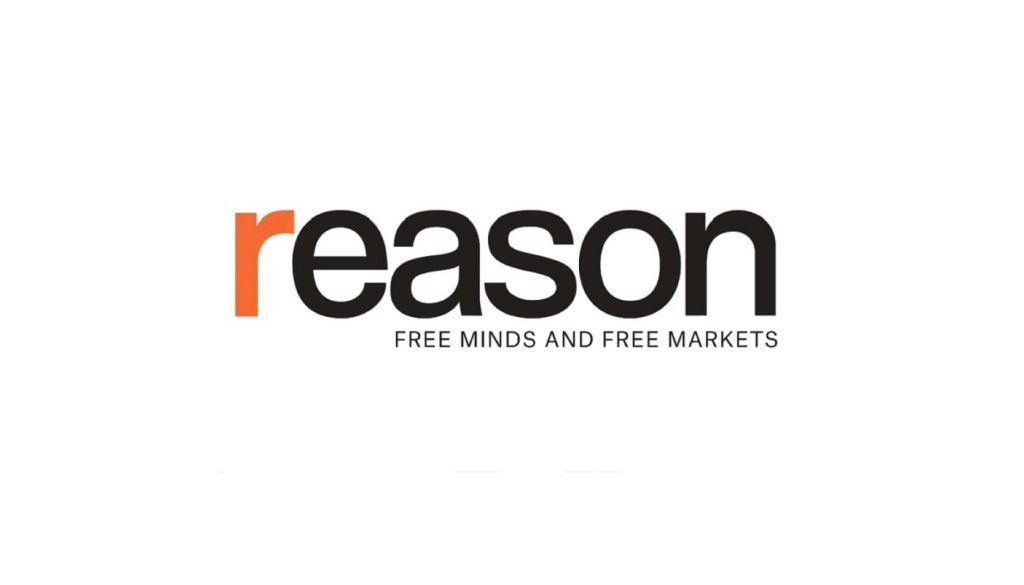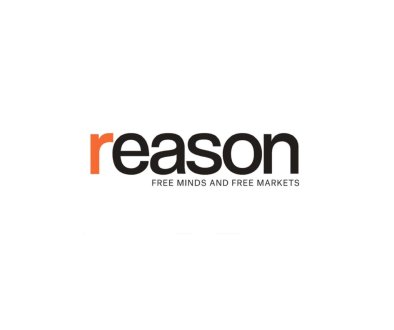How LSD Helped Launch a Radical Libertarian Counterculture
Today’s guest is Susannah Cahalan, whose new book is The Acid Queen, a biography of Rosemary Woodruff Leary—muse, fugitive, and heavily indicted co-conspirator in Timothy Leary’s psychedelic revolution.
She talks with Reason‘s Nick Gillespie about hippie communes, outlaw drug smuggling, the war on drugs—and how the ’60s counterculture, in its best moments, ran experiments in radical individualism, using personal freedoms to build voluntary communities rooted in altered consciousness and aesthetic liberation. The Acid Queen helps explain how the personal became the political, why libertarians should care about the messy legacy of the counterculture, and what comes next in drug policy, especially regarding psychedelics.
This conversation was recorded at a live event in New York City. Go here to find out about upcoming events. Go here to sign up for Reason‘s NYC events newsletter.
0:00—Introduction
1:15—Who is Rosemary Woodruff Leary?
7:02—How did Rosemary meet Timothy Leary?
9:57—Why America was ready to experiment with psychedelics
15:12—Rosemary’s connection to John Lennon and Yoko Ono
16:11—How Rosemary and Timothy Leary became outlaws
21:07—The jailbreak of Timothy Leary
28:45—The political speech of Timothy Leary
31:45—Why Rosemary and Timothy split up
35:31—The final years of Rosemary
40:08—The reconciliation of Rosemary and Timothy
42:54—The common thread between Cahalan’s books
46:18—Labeling in mental health
48:34—Cahalan’s experience with psychedelics
Upcoming events:
- Reason Speakeasy: Nick Gillespie and Elizabeth Nolan Brown on the MAHA Movement, June 25
- The Reason Roundtable Live in New York City, July 15
Today’s Sponsors:
- Reliance College: What if one day could change how you think—how you lead—and how you shape your future? Join Reliance College for Reliance Day—Saturday, June 28 in Los Angeles! This one-day, high-impact experience is designed for students, professionals, and lifelong learners ready to level up their thinking in an AI-driven world. At Reliance Day, you’ll dive into collaborative Socratic discussions and sharpen the critical thinking and leadership skills that drive success in college, business, and life. It’s a full day of intellectual challenge and creative exploration—rooted in the Great Books and Montessori-inspired methods that have transformed over 400 lives. Go to RelianceCollege.org/reliancedays to register today.
- Future of Freedom: If you’re tired of cable news debates and Twitter shouting matches and you’re looking for serious, good-faith conversations between people who actually care about liberty, then it’s time to check out the Future of Freedom Each episode dives deep into a single topic—tariffs, campus speech, the Department of Government Efficiency—and brings together two guests who disagree on the best path forward. But here’s the twist: This isn’t a debate show. No interrupting. No dunking. If you believe the future of freedom depends on more than just winning arguments and you’re ready for something deeper than the usual echo chambers, check out the Future of Freedom podcast. Real disagreement. Real ideas. Real conversations. Subscribe to Future of Freedom wherever you get your podcasts.
Transcript
This is an AI-generated, AI-edited transcript. Check all quotes against the audio for accuracy.
Nick Gillespie: This is The Reason Interview With Nick Gillespie. Thanks, everybody. We’re at the Psychedelic Assembly, which co-sponsors this event. Susannah Cahalan is the author, most recently, of The Acid Queen: The Psychedelics, Life, and Countercultural Rebellion of Rosemary Woodruff Leary. Susannah Cahalan, thanks for talking to Reason at the Psychedelic Assembly.
Susannah Cahalan: It’s such a pleasure to be here—and especially at a place that Rosemary would have loved so much.
Yeah, this has her vibe all over it. Why don’t you, just very briefly, tell us who Rosemary Woodruff Leary is?
Sure. So, Rosemary Woodruff Leary—as much as I hate to start with Timothy Leary, we are starting with him—she was the third or fourth wife, depending on who you ask and how seriously you take divorce records from Mexico. She was a seeker. She was someone who was very much a behind-the-scenes character who was propping up Timothy Leary, working with him behind the scenes, on his speeches, sewing his clothing, really helping him create an image.
She was also very much a true believer in the role that psychedelics could play in not only expanding consciousness but actually making society better. She was called the Queen of Set and Setting.
Explain what set and setting is. Because when you’re talking about Timothy Leary and set and setting, that carries a wallop. Explain that for us.
It does. One of my favorite things that Timothy Leary wrote about—this is pre-Rosemary—was the concept of set and setting. I’m going to reduce it very much down to its essence, but it’s the mindset that you bring into a trip and it’s the environment. Rosemary was very good at making people feel grounded and supported. She was great at beautifying spaces. She knew what colors to make the throw pillows, to position people properly to make sure they channeled and augmented their trips. That’s why she earned that moniker.
Leary was born in the early ’20s. She was born in 1935 in California and then ended up in New York?
She was born in St. Louis.
Oh sorry, in St. Louis. Then she is in California at some point, right?
Yes.
In any case, she shows up kind of at the end of the Beatnik scene—or the Beat scene—in New York. What was going on there? Who was she? We’ll get to how she meets Leary and how they become the king and queen of Millbrook—the upstate estate where Timothy Leary, Richard Alpert – who became Ram Dass – and Ralph Metzner really created the text that started the ’60s version of psychedelia. But what was she doing in New York?
She was born in 1935, as you said, from St. Louis. High school dropout, very beautiful. Was in an abusive marriage at 17, and left that, after she lost a baby, boarded a train to New York with no money in her pocket and no degree. Was recruited and spotted by Eileen Ford and began modeling.
Of Ford Models?
Of Ford Model Fame. And she then did what was like the second-sexiest occupation you could do at the time: airline stewardess, which was apparently harder to get into than Harvard. You had to be less than 120 pounds, x, y, z. So she fit the bill, and there she met her second husband, who was a jazz accordionist and a Holocaust survivor.
She knows how to pick them.
Oh yeah. He was an intense guy, I’ve heard. I did not meet him myself, but I interviewed several people who said he really didn’t take anyone’s shit, and people respected him—especially Miles Davis, who was a big fan of his.
Interestingly, I’ve actually listened to his work. You can find Matt Matthews on Apple Music, I think, and it’s really good—shockingly good, jazz accordion. She met him and married him, and was instantly involved in the jazz scene that was going on in mid-’50s in New York City. And began rubbing shoulders with the early Beatnik scene—with Jack Kerouac and kind of rubbing shoulders with these interesting writers, artists, and scoundrels of the era. That’s when she started really experimenting with drugs.
What drove her to that? Because this is a fascinating demimonde which gives rise to the East Coast version of the ’60s counterculture. What was she seeking that she wasn’t getting in St. Louis?
I think that’s such a great question. She had always talked about herself in these mythic terms. She saw herself as someone who was going to live a great life—with a capital G, Great. She wasn’t going to find that in her small town in St. Louis. And even though St. Louis is a city, she wasn’t going to find that there.
She was attracted to “great men,” as she liked to think of them—these genius archetypes. That’s what she found in New York. Through being in this scene, being a part of the music scene — even though she wasn’t a musician or necessarily an artist outright, she was able to express some of those sides of herself and express those “great” parts through the men that she picked.
Let’s talk about how she meets Leary and ends up moving to Millbrook, the upstate estate where Leary and his peers kind of repaired to after getting bounced from Harvard in the mid-’60s. How did she meet him, and how did she come to live in Millbrook?
She took a little bit of LSD before she went to a gallery opening, in downtown. There she saw the man of the hour, Timothy Leary. They were fresh off The Psychedelic Experience…
The book…
…which was a seminal guide that is quoted in a famous Beatles’ song “Tomorrow Never Knows.” He was really pontificating and enjoying the spotlight there. They both were immediately attracted to each other. They both write independently of that immediate pull.
She was intrigued, but she was divorced, again, and dating another jazz musician—who was very abusive, but she was in love with him. So at that time she didn’t decide she wanted to go with Leary. It was later, when she decided to go with friends to visit Millbrook.
Millbrook, for people who don’t know, is a 2,000-acre rich estate — wealthy landowner, old-school estate—in Millbrook, in a very fancy suburb in upstate New York. This is a place that has about twelve buildings, including an indoor tennis court and a bowling alley on the grounds.
Timothy Leary was dating, briefly, the sister of two brothers who owned that estate. Through her—an amazing woman named Peggy Hitchcock—she managed to secure that house for $1 a month for Timothy Leary and his fellow ex-Harvard psychologists.
Who eventually created something called the League of Spiritual Discovery, and I mean, that is really—if there’s a place where what we think about when we think of the psychedelic ’60s where it comes from—it’s that.
Absolutely. The experiments weren’t just psychedelic in nature, but they obviously did experiment very heavily with using psychedelics—using them in high doses, using them over long periods of time, using them with a person, solo. All sorts of different psychological experiments that Timothy was bringing from his time at Harvard and, before that, working on interpersonal dynamics.
They would not only do that, but would also experiment with your food—dyeing the eggs green, just trying to get you out of the stultifying present and really become aware of your surroundings. A gong would bang. They were constantly— at that point, you had to go to your journal and present how aware you were by writing it down. It became this exercise, like a Gurdjieff kind of exercise, in awakening and being very present.
Can you set the scene a little bit for what was going on in postwar America where this type of thing was even taking place and then was about to burst out into everyday culture? Were people feeling repressed? Were they feeling stultified? Why? And then why were they ready to, “Ok, I’m going to go to this crazy place upstate and take a bunch of drugs and eat green eggs?”
You know, it’s an interesting time. I think there’s a lot of overlap with today. But it was coming out of 1950s America, coming out immediately after the atomic bomb. There was a lot sense of insecurity. Some people responded to that insecurity and fear by doubling down—having a lot of children, being very family-focused. And other people started questioning the nature of their reality and the role of society.
It was the same time you had the rise of vast intellectualization that was happening in America where you had cheap paperbacks, foreign translations, and art house cinema. All these things were happening at that time. And that was really the Beatnik movement. And the next kind of step was: How do we apply this not only to this little Beatnik world, but to society? Psychedelics seemed to be one of the ways people were exploring “how do we change our consciousness and, thus, the rest of the world?”
And I suspect some people in the audience get a sense of this too, when you talk about—ok, so they’re tripping, and then a gong sounds, and they write in their journal, and they eat food that is dyed weird colors. There is a dimension to Millbrook where it is—it’s either the greatest thing ever or it’s the beginning of, you know, the People’s Temple.
Like a bad movie. Yeah, yeah, exactly.
How did it go in and out of that kind of focus?
Well, it was both—like all things, like many things are. It was Nina Graboi, who was a female psychonaut of that era—a little older than the rest, kind of like a mother figure—she said that Millbrook had many faces. And I think that’s very true.
I think it did change. A lot of times, women had a very different experience than men did there. In some ways, yes—this idea of expanding consciousness. I think there was authentic belief there. They were trying vegetarianism, communal child-rearing, all sorts of these different ways of building a new society, because they felt that the society as it was, was stuck, was retrograde – or whatever word you want to use. It was regressive. It was stultifying, all the words.
But I think this was an opportunity for them. So there’s that side. But then the old social hierarchies were still observed in the house. There was very human-based behavior that occurred. Women were oftentimes still left— Peggy Hitchcock, actually, had a great line where she said, “At the end of the revolution, there was always the question, who’s going to do the dishes?” And at the end of the day, the women were doing the dishes.
They were still kind of caught up. Rosemary described how Timothy—despite all of his talk of revolution of the mind and was going to upend society—was the kind of man who put his hand out and expected to have a martini glass put in it.
And she—part of the function that she served was to do that.
Absolutely.
She kept the rooms clean, or helped organize that. Organized the feeding of, you know, hundreds of people sometimes.
And you know, it’s funny. It’s been an interesting thing, talking about
Article from Reason.com

The Reason Magazine website is a go-to destination for libertarians seeking cogent analysis, investigative reporting, and thought-provoking commentary. Championing the principles of individual freedom, limited government, and free markets, the site offers a diverse range of articles, videos, and podcasts that challenge conventional wisdom and advocate for libertarian solutions. Whether you’re interested in politics, culture, or technology, Reason provides a unique lens that prioritizes liberty and rational discourse. It’s an essential resource for those who value critical thinking and nuanced debate in the pursuit of a freer society.




